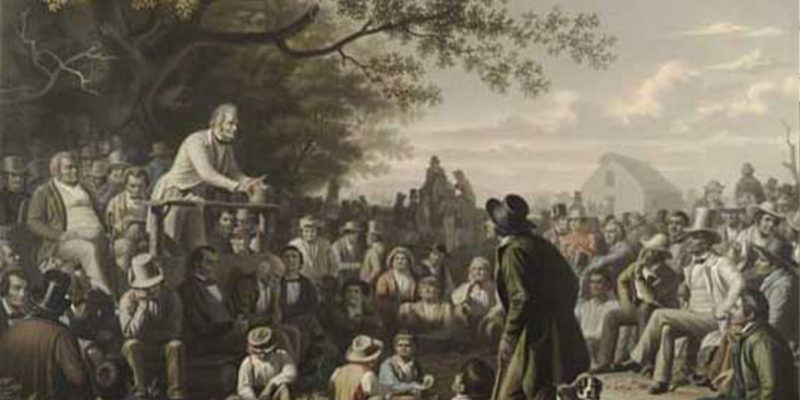The debate around banning pornography that objectifies women fractured the feminist movement. Future attempts to outlaw pornography will follow the precedent set forth in Osbourne v. Ohio and attempt to ban pornography in order to protect public health and safety.
Obscenity and pornography have been contentious issues in American courts. In 1964, Supreme Court Justice Potter Stewart made one of the Supreme Court’s most memorable remarks in the decision of Jacobellis v. Ohio (378 U.S. 184, 1964) when he stated “I know it when I see it.” This was in reference to determining if hardcore pornography would be considered protected free speech under the Roth test (Gewirtz 1995, 1023). In the 1970s and 1980s a coalition of women in the United States formed the group Women Against Pornography (WAP) in an effort to ban pornography. WAP contained many notable feminists including Andrea Dworkin, Catharine MacKinnon, and Gloria Steinem who attempted to contest pornography through civil rights litigation for women. The WAP movement tried to curb the spread of pornography shops emerging in cities beginning in the 1970s. This proliferation of pornography coincided with the transition of pornography from a space of public interaction where individuals interacted with pornography in theatres, to a more intimate and private space where individuals could interact with pornography at home with new media such as commercial pornographic magazines, VHS, and Betamax.
Attempts to combat pornography by defining it as a civil rights violation caused a rift in the feminist movement known as the Feminist Sex Wars. Many feminists rose to oppose the WAP approach, as they saw it as a challenge to female sex positivity, detrimental to sexual minorities, and harmful to free speech and the freedom of expression. Since the peak of the WAP movement in the 1980s, graphic pornography has become more entrenched in society through the World Wide Web.
With the greater entanglement of pornography with society it is important to ask the question if pornography that patently objectifies women should be banned. I argue that pornography, even pornography that clearly objectifies women, should not be banned because bans (1) essentialize the role of women, (2) can be used for political gains by partisans, even in ways that are unintended by the initial advocate of such a ban, and (3) are nearly impossible to implement under the current legal framework in the United States.
Andrea Dworkin and Catharine MacKinnon were two anti-pornography activists who drafted the Antipornography Civil Rights Ordinance in the 1980s making pornography a civil rights violation against women. The ordinance made its rounds throughout Midwestern cities and was defeated twice in Minneapolis, MN but was signed into law by the mayor of Indianapolis, IN in 1984. The Indianapolis statute outlawed pornography which was defined through a list of provisions that outlawed the sexually explicit subordination of women through picture or words (Vadas 1987). In 1985 the law was ultimately struck down for being “unconstitutionally vague” (Brockwell 1993, 131-133).
The framework established under the Dworkin-MacKinnon Ordinance classified women as a monolithic entity removing the agency of a woman’s individual choice. The legislation does this by attempting to secure legitimacy through codification. With this legitimacy/ implied legitimacy, these types of ordinances create authoritative definitions of what sexual practices and behaviors are considered acceptable – where, in fact, they represent the subjective opinions of WAP and similar interest groups. Sexual practice acceptability is thus limited to further a group’s political agenda, ultimately marginalizing sexual expression and resulting in a restriction on citizens’ freedom of expression. With this type of legislation women no longer have the ability to engage in or consume pornographic material they may otherwise enjoy. These ordinances ultimately harm women as they define a large portion of female sexual behavior as unacceptable and unconstitutional. Women who engage in these behaviors are therefore considered less than women if they willfully choose to engage in behavior which is considered improper.
Legislation such as the Dworkin-MacKinnon Ordinance contains the drafters’ idiosyncratic aims of what it means to protect women. Anyone who then speaks out against the legislation will be construed as attempting to undermine the drafters’ aims, which, in turn, can be construed as inflicting harm on women. Thus, the drafters of the legislation speak for all women. Any women who choose to dissent will be considered gender traitors and their opinions will be marginalized. The legislation leaves no room for individuality and is insidious because it not only seeks to silence those opposed to it, it also seeks to change behavior outside of the realm of pornography.
Behavior is banned under the legislation because it is somehow considered shameful or immoral by the drafters. Deeming this behavior shameful discriminates against men and women who would choose to engage in the proscribed sexual behaviors and practices. The outlawing of these practices defines what is acceptable and therefore changes how the sexes relate to one another both inside and outside the private sphere. In short, these legislative actions attempt to silence opponents, and change societal behaviors to conform to a group’s political wishes through the legal code.
A strong legal precedent is in place to protect against the outlawing of pornography. Once the Dworkin-MacKinnon Ordinance was defeated the case went to the United States Court of Appeals for the Seventh Circuit in the case of American Booksellers v. Hudnut (771 F.2d 323, 1985). The appellate court upheld the district court’s ruling, holding that a blanket law forbidding the display of women as enjoying pain, humiliation, rape, or being presented in “positions of servility or submission” is explicitly prohibited no matter how great the literary, political, or artistic value of work was an unconstitutional proposition. The court equated this ordinance with thought control: “Speech that portrays women in positions of equality is lawful, no matter how graphic the sexual content. This is thought control. It establishes an ‘approved’ view of women, of how they may react to sexual encounters, of how the sexes may relate to each other. Those who espouse the approved view may use sexual images; those who do not, may not.” (See American Booksellers v. Hudnut 771 F.2d 323 [1985])
The United States Court of Appeals for the Seventh Circuit came to its conclusion as the law would be used as a tool to silence opponents: “The state may not ordain preferred viewpoints in this way. The Constitution forbids the state to declare one perspective right and silence opponents.” The court determined that the ordinance restricted “pornography” solely based its portrayal of women rather than the work’s merit, or ability to meet the three-prong standard from Miller v. California (413 U.S. 15, 1973). The plaintiffs in the case went beyond what was considered obscene and would end up restricting many works considered culturally important that meet the Miller test standard such as the Maltese Falcon, Shakespeare’s Romeo and Juliet, Gone with the Wind, and Lee’s To Kill a Mockingbird amongst many others just based upon the portrayal of women in those works. This broad control ultimately infringed upon the First Amendment. The United States Supreme Court affirmed the appellate court’s ruling without comment in the case of American Booksellers v. Hudnut (475 U.S. 1001, 1986).
What makes banning pornography that objectifies women difficult is there is an implied right to the possession of pornography through Stanley v. Georgia (394 U.S. 557, 1969). This court case invalidated all state laws that forbade the private possession of materials that were judged obscene; this was judged on the grounds of the First and Fourteenth Amendments. The case established an implied “right to privacy” for the possession of obscene materials which includes pornography. The right to possess obscene material is protected by the constitution, but the right is not absolute as witnessed by bans on child pornography. As the result of Stanley v. Georgia, President Lyndon Johnson established the President’s Commission on Obscenity and Pornography. In 1970, the commission concluded that “there was insufficient evidence that exposure to explicit sexual materials played a significant role in the causation of delinquent or criminal behavior.” (Freidman 2000)
The findings of this commission were challenged under the Meese commission established by President Ronald Reagan in 1985. The commission, headed by Attorney General Edwin Meese, found that pornography was harmful to varying degrees (Downs 1989, 222). In 1987, the Report of the Surgeon General’s Workshop on Pornography and Public Health affirmed the Meese Report with Surgeon General C. Everett Koop concluding that pornography is harmful: “Although the evidence may be slim, we nevertheless know enough to conclude that pornography does present a clear and present danger to American public health.” (Koop1987)
Despite the negative conclusions brought forth under the Reagan Administration, rights for pornography continued to be upheld. In 1986 the Congressional Research Service (CRS) of the Library of Congress formulated a legal analysis of the Meese Commission report. The CRS stated that “even if the Commission’s conclusions, which are controversial and subject to serious counterarguments, are accepted as valid, they do not appear to approach the Brandenburg incitement standard which must currently be met before constitutionally protected materials may be regulated.” (Reimer 1986, 12) The CRS concluded that in order for the constitutionally protected materials to be regulated they must cross the Brandenburg standard, which was established in Brandenburg v. Ohio (395 U.S. 444, 1969). It holds that states cannot restrict speech unless there is the likelihood it will incite or produce imminent lawless action. Since pornography does not incite imminent lawless action it is constitutionally protected. Future attempts to ban pornography or obscenity will be difficult to enact under the Brandenburg standard as they are unlikely to incite imminent lawless action.
The debate around banning pornography that objectifies women fractured the feminist movement. The movement was unpopular which can be seen in two further failed WAP attempts to ban pornography: a 1985 referendum in Cambridge, MA (defeated with a vote of 58% to 42%), and a 1988 ordinance passed in Bellingham, WA that was challenged by the ACLU and defeated in the federal courts. Based on current case law a pornographic ban based only on the objectification of women is nearly impossible. The WAP faded out of existence in the mid-1990s and, along with it, its attempts to ban pornography on the premise that the objectification of women is a civil rights offense.
Despite the dissolution of the WAP and the difficulty of implementing pornography bans, it is possible that a ban could be put in place successfully. The biggest indicator for this is New York v. Ferber (458 U.S. 747, 1982) which outlawed the distribution of child pornography, and Osborne v. Ohio (495 U.S. 103, 1990) which declared the government’s attempts to control and outlaw child pornography constitutional because the government aimed to eradicate legitimate harms created by the market for child pornography. This case invalidated First and Fourteenth amendment protections established under Stanley v. Georgia in order to mitigate against negative psychological and mental health consequences associated with child pornography.
Future attempts to outlaw pornography will follow the precedent set forth in Osbourne v. Ohio and attempt to ban pornography in order to protect public health and safety. Preliminary research has found pornography addictions are on the rise largely as a result of technology such as the internet. If new research indicates pornography has serious psychological effects, there may be new grounds to ban pornography as it may be disenfranchising the public and having severely negative public health externalities. Pornography could be regulated in a similar fashion to narcotics and controlled substances.
A response to this rise in addictions can be seen in bill S.C.R. 9 signed by Utah Governor Gary Herbert in 2016, in which pornography is declared a public health hazard, and the need for increased education and research on the topic are affirmed. In 2016, during his Senate Judiciary Committee confirmation hearings, Attorney General Jeff Sessions indicated pornography was a problem that needed to be addressed. Sessions vowed to reinstate a Department of Justice special taskforce to prosecute obscenity, a taskforce that had been disbanded under the Obama Administration.
The new challenges to pornography in the future will not likely come from leftist feminist groups such as the WAP, but instead groups from the conservative right who often have motives with religious undertones for the banning of pornography. If pornography is in fact associated with negative health outcomes, groups who seek to pursue new avenues for restrictions will have to contend with similar constitutional challenges seen by the WAP of attempting to ban expression which they find to be unpopular.
WORKS CITED
Brockwell, P. Heath. 1993. “Grappling with Miller v. California: The search for an alternative approach to regulating obscenity.” Cumb. L. Rev. 24: 131.
Downs, Donald Alexander. 1989. The new politics of pornography. Chicago: University of Chicago Press.
Friedman, Andrea. 2002. Prurient Interests: Gender, Democracy, and Obscenity in New York City, 1909-1945. New York: Columbia University Press.
Gewirtz, Paul. 1995. “On I know it when I see it.” Yale LJ 105: 1023.
Koop, C. Everett. 1987. “Report of the Surgeon General’s workshop on pornography and public health.” American Psychologist 42 (10): 944.
Reimer, R. A. 1986. “Legal Analysis of the Pornography Commission’s July 1986 Final Report.” Congressional Research Service Review. October: 11-13.
Vadas, Melinda. 1987. “A First Look at the Pornography/Civil Rights Ordinance: Could Pornography Be the Subordination of Women?.” The Journal of philosophy 84 (9): 487-511.




 Compass is an online journal that provides a space for the work of talented undergraduates who have original and well-articulated insights on important ideas and issues relating to American democracy understood in the broad contexts of political philosophy, history, literature, economics, and culture.
Compass is an online journal that provides a space for the work of talented undergraduates who have original and well-articulated insights on important ideas and issues relating to American democracy understood in the broad contexts of political philosophy, history, literature, economics, and culture.